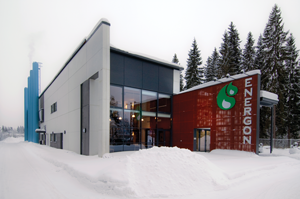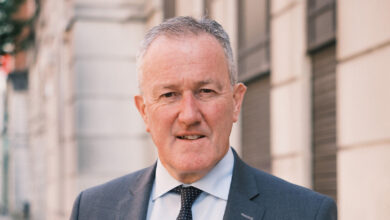Scandinavia’s R&D success
 Northern Ireland must follow Scandinavia’s lead and cut business grants which don’t back R&D. Graham Gudgin discusses a radical new direction with agendaNi.
Northern Ireland must follow Scandinavia’s lead and cut business grants which don’t back R&D. Graham Gudgin discusses a radical new direction with agendaNi.
“We’ve got to look for good role models and not merely the nearest but our real problem in Northern Ireland is complacency,” says Graham Gudgin in a sharp critique of the region’s economic culture. Gudgin currently works at Cambridge University’s Centre For Business Research and has analysed Northern Ireland’s economy since 1985.
“The most immediate place to look is the Civil Service,” he says of the problem. “They’ve existed for decades, just shovelling British tax-payers’ money into very willing companies in Northern Ireland.”
He also finds that attitude among many businesspeople, who cannot comprehend an economy without grants.
In his view, the whole system breeds complacency and politicians “don’t want to know any better”. As EU state aid winds down, he blames the Civil Service for ignoring alternatives: “We’ve seen this tsunami coming for several years now and they’ve done nothing about it.” Instead, it is the Secretary of State who has been pushing for lower corporation tax.
Northern Ireland’s decline, though, can be reversed as a smaller country with a more troubled history has shown. Estonia’s business R&D rate quadrupled from
0.16 per cent of GDP in 1999 to 0.64 in 2009. Its overall rate stood at 1.42 per cent. The UK and Irish percentages were 1.87 and 1.77 respectively. Northern Ireland’s in-house business R&D figure for the same year was 1.0 per cent (of GVA).
The Baltic state endured a 58-year Soviet occupation and emerged from communism in 1991. It followed the examples of Finland and Sweden (Europe’s two leading R&D states), building on its existing cultural links.
“Even countries that came out of the Soviet Union [and] did essentially no R&D at all, got their act together and are overtaking us,” Gudgin warns. “The world isn’t standing still.”
Invest NI does give generous grants to companies undertaking R&D in Northern Ireland but not many of these firms exist. He rejects the agency’s “not much we can do about it” attitude.
“This is why [cutting] corporation tax is important in attracting high tech companies,” Gudgin explains. “We’ve got to get our companies more R&D-minded and collaborating with the universities, and perhaps with each other.”
Companies starting up in R&D could receive direct government support but through a very different model. Finland’s state-owned research institute (VTT) employs 3,167 staff and has a €292 million turnover.
“We’ve got nothing like that,” he states. “We could set up an institute that is really to act as a middleman between not only Northern Ireland’s universities but the whole UK universities, to try and introduce that sort of research to companies: to give companies the confidence that they can do it.”
Going further, Gudgin contends that all other business grants should be ended. “Why would you do that?” was the response in Finland and Sweden where the focus is entirely on R&D. A name change from Invest NI to Innovate NI was a no-brainer and “learning by doing” would give the agency a pro-innovation attitude.
In contrast, British R&D has been falling for several declines, partly due to the rapid decline of manufacturing. The UK has “put all our eggs in a sort of financial basket” and the Republic took a similar gamble on corporation tax.
One way that Finland “cracked” the innovation problem was by “mobilising the whole society in collaborating between the education system, universities, civil service [and] companies in a way that we don’t.”
Isolation is no excuse. Finland is nearly twice as far from Europe’s centre as Northern Ireland, and has high tech research centres on the Arctic Circle. To him, the lessons for our small region are therefore very clear.





